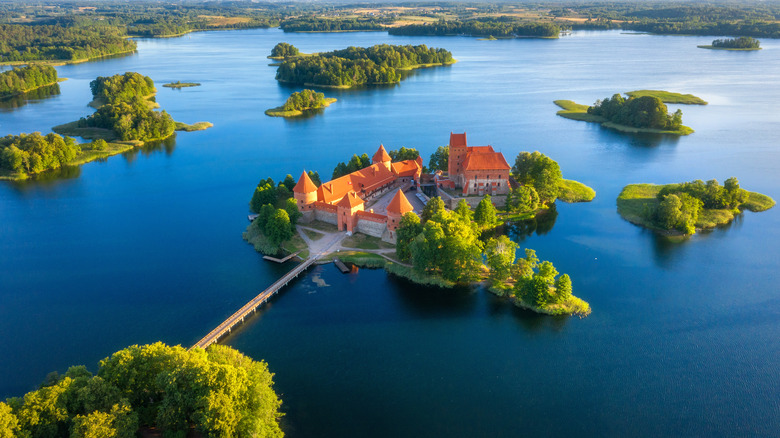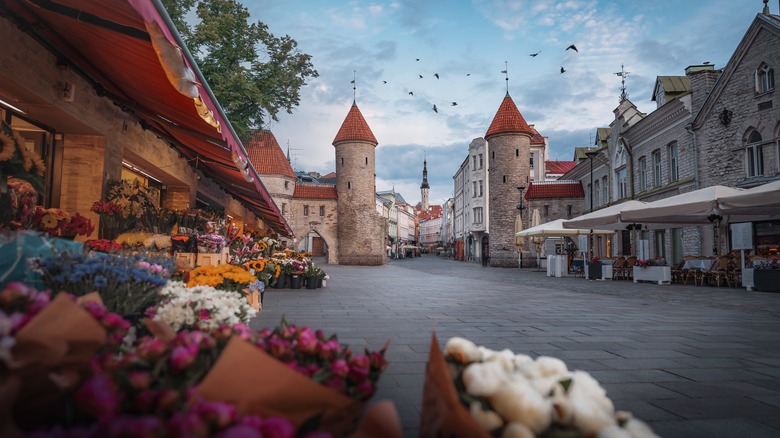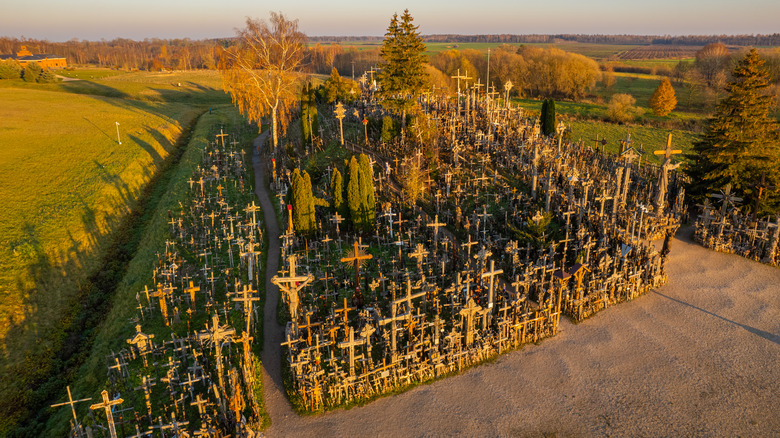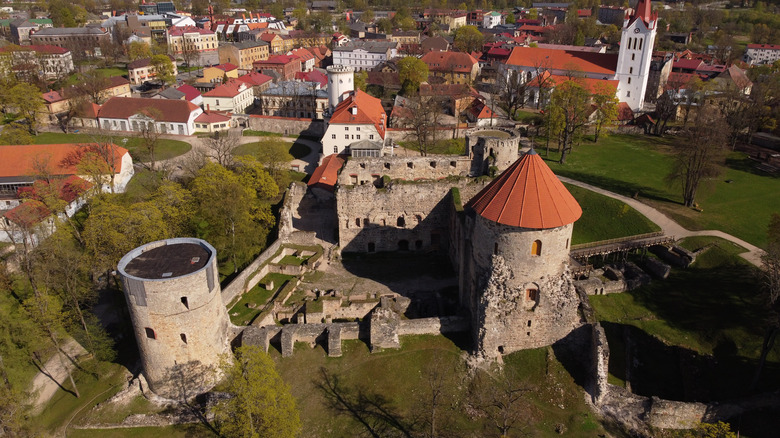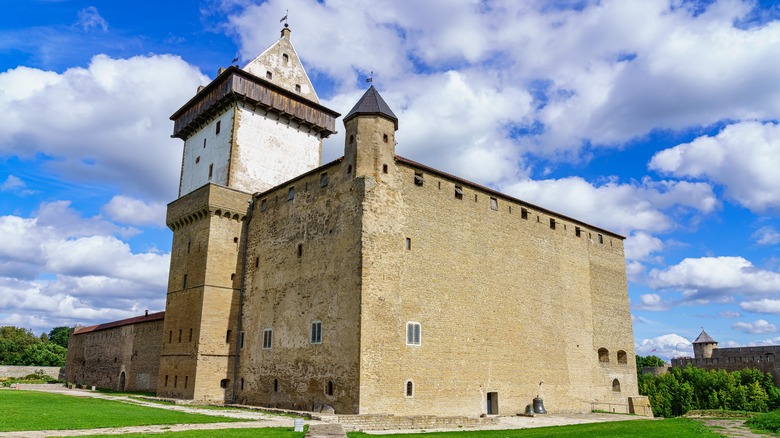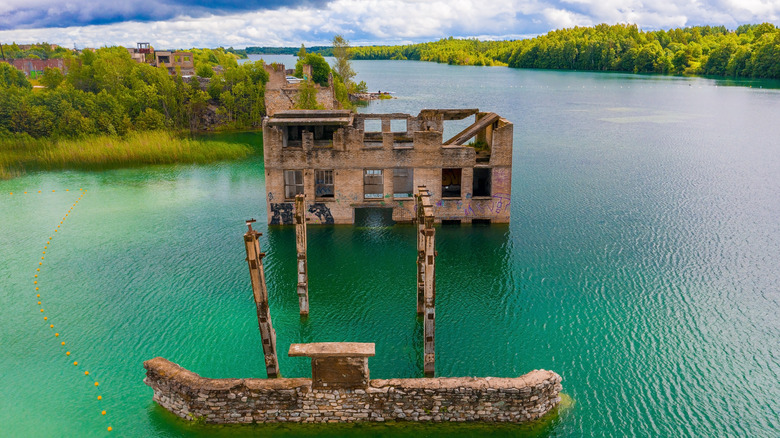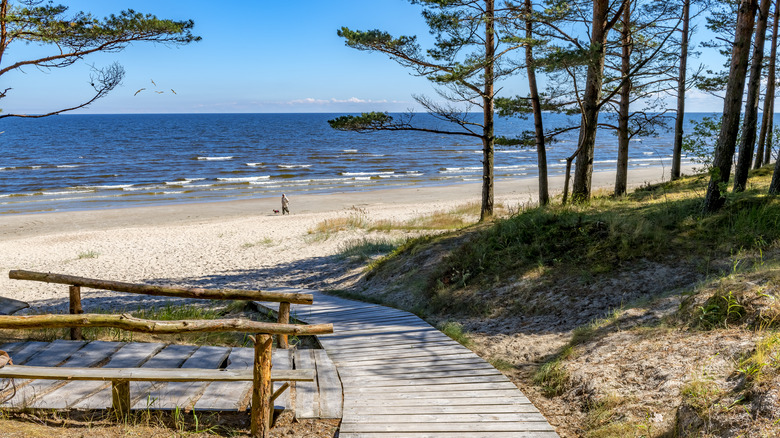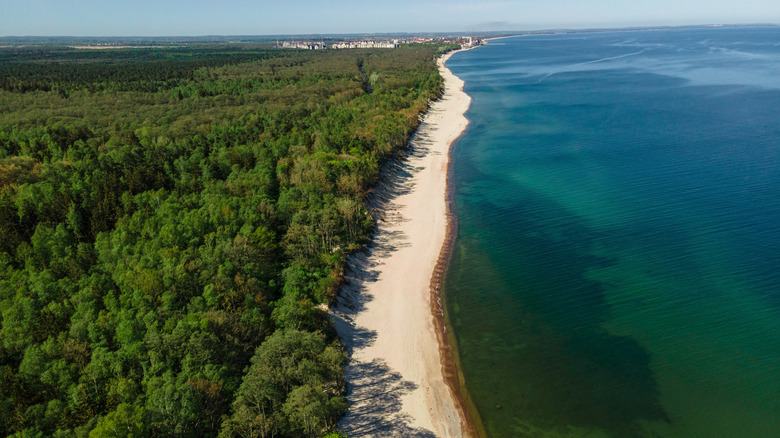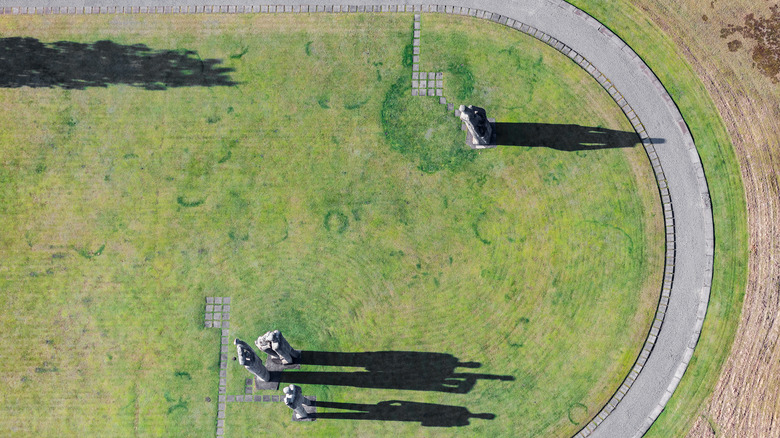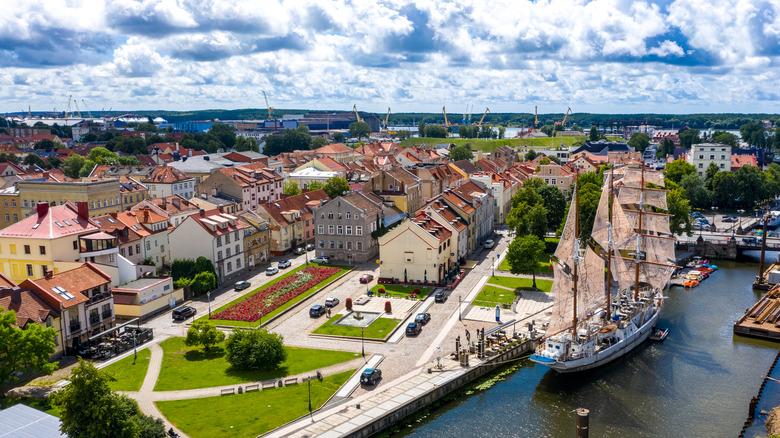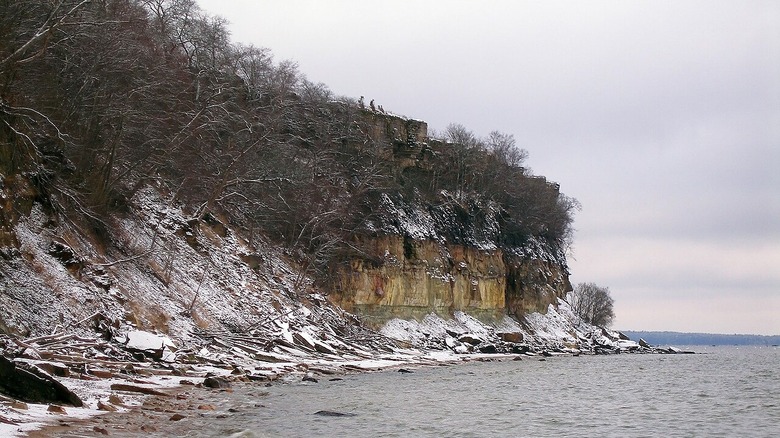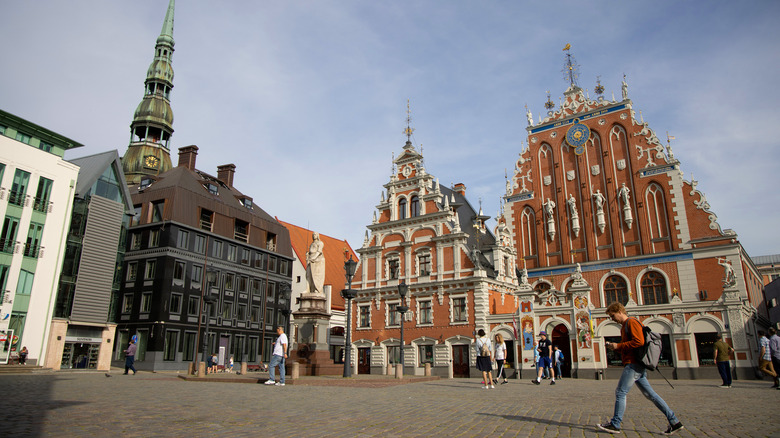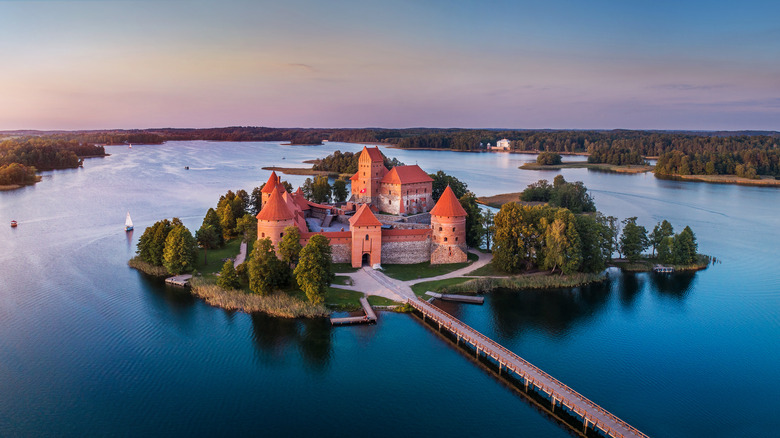12 Must-Visit Places In The Baltic Countries
The Baltic Sea is a majestic northern region encircled by the Scandinavian nations, Germany, Poland, and, of course, the Baltic states. In descending geographical order, Estonia, Latvia, and Lithuania make up the Baltics, a unique regional clime dominated by a remarkable culture, history, and atmosphere.
The countries might not be well traveled by those arriving in Europe from beyond its continental borders (with Western Europe welcoming far more American visitors than its eastern neighbors, for instance), but they remain gems of European exploration. The strategic location made them an integral part of wartime history that shrouded the region in conflict during the 20th century. Later, the Baltic states came under Soviet control, adding another dimension to their history. Before any modern footprints were stamped into this northern reach of mainland Europe, however, Viking travelers frequented the coastline and interior. Locals and travelers coming to the region alike tout this blend of varied historical eras and natural wonders as a complex "It" factor that makes the Baltics a standout destination.
There's something infinitely majestic about the northern extents of Europe, and the Baltic countries capture that beauty and welcoming atmosphere perfectly. From the shimmering Christmas markets to unique historical sites that commemorate and highlight past triumphs and tragedies, the Baltics should be high on your list of places to explore.
Tallinn Old Town, Estonia
Estonia is at the crossroads of the region's history and future. Salme is considered one of the first points of contact between the Vikings and the people of this region. At the same time, much of Estonia's modern governmental infrastructure runs digitally, and the country's e-Residency program (for foreign nationals) has expanded global business potential exponentially.
Tallinn, the nation's capital, has always been at the heart of the immense changes through time. The city's Old Town is a walled community with settlements that may have been established more than 1,000 years ago. The Old Town's walls were constructed beginning in the 13th century, and continuous development led to its status as one of the best defensive positions in northern Europe. Today, visitors can check out sections of the wall that remain, as well as some of the town's towers. Within them, you can visit museums dedicated to the community's history.
Tallinn's Old Town is a charming area with a fabulous main square, perfect for festivals and celebrations. In the wintertime, the square hosts classic Christmas market fare, with food, drink, and market stalls all across its cobblestone expanse. Tallinn has a particular charm that makes visiting a truly remarkable adventure.
The Hill of Crosses, Lithuania
The Hill of Crosses is exactly what the name suggests. The area is a small hill outside the Lithuanian city of Šiauliai plastered with crosses. There are upwards of 100,000 crosses of all sizes and materials on the hill, with the first written records of its existence dating back to 1850. However, it's thought that Lithuanians in the area began leaving crosses here after the November Insurrection in 1831 to honor their family members and compatriots who died while trying to rebel against Russian rule. Another revolt against foreign political dominion in 1863 may have cemented the legend of this hill in the zeitgeist of Lithuanian nationalistic thought. Later, Lithuania would become an occupied republic in the Soviet state — one of atheist thought that prioritized Soviet identity above religious and other affiliations throughout the country's diverse political geography.
While it's thought to have originated as a memorial shrine to those who lost their lives rebelling against Russian rule, it later came to symbolize Lithuanian heritage despite repeated Soviet efforts to demolish the religious iconography placed on its rise. The crossover between religious symbolism and rebellious history makes it a truly unique sight for anyone traveling through the Baltics.
Cesis, Latvia
Cēsis is home to a 13th-century castle that's remained in remarkably excellent condition. Today, the castle is an integral symbol of Latvian history and was once one of Livonia's most imposing fortresses. Originally built around 1214, the castle has served many different local peoples throughout the ages. It has been revived as a tourist destination over the last century, but from the early 18th century until more recent times, people of the area left the structure abandoned and even used bricks from its walls to build their own homes. The result is a countryside destination imbued with the majesty of the defensive fortress itself.
At the castle, you can also visit the exhibition space and museum facilities housed in the manor house. From its early foundations through to the fortification's usage during Latvian struggles for independence over the centuries, Cēsis Castle and the surrounding community make for an amazing place to visit.
Hermann Castle in Narva, Estonia
Narva's Hermann Castle is another fabulous medieval construction in the Baltic states. Established by the Danes in 1256 on the banks of the Narva River (it's also sometimes referred to as Narva Castle or Narva Fortress), the impressive castle overlooks the river separating modern Estonia from its neighbor, Russia. The castle has seen a revolving door of rulers throughout its time, standing resolute in one of Europe's most fascinating landscapes. Danes, Germans, Swedes, and Russians have all laid claim to this iconic riverine castle.
Visitors arriving in Narva will be greeted by both the intricate stonework and the rush of water beneath its foundations. Inside the castle, the grounds now play host to a museum dedicated to the region's history dating back to the arrival of the first Danes to this community. There are permanent exhibitions showcasing Narva's ever-changing history, as well as several excellent temporary installations.
Rummu Quarry and Prison, Estonia
Rummu Quarry and Prison is a unique dive site that appeals perfectly to those with a combined wonder for the aquatic world and an interest in the machinations of Soviet control in its exterior territories. The site is partially submerged today but was built to support a prison labor camp alongside the community's limestone quarry. Bold explorers have traversed much of the underwater relic of Estonia's bygone Soviet era. While the maximum depth only falls to about 30 feet across the whole site, the northern clime's chilling temperatures still make a prolonged dive a bit difficult: The water will often drop to near-freezing temperatures during the winter months. With a dry suit, you can explore the prison's partially and wholly submerged structures for longer.
It's also noteworthy that visibility remains clear throughout the ruins, as long as no one in the dive party makes contact with the floor of the aquatic environment, of course. The prison was built in the late 1930s, but its first cells were introduced in 1949 after Soviet supremacy over the Baltic region began to take root. Once the USSR collapsed, the site was abandoned, and groundwater eventually transformed the remains into something else entirely.
Jurmala, Latvia
Jūrmala is a pure, unspoiled resort town on the Gulf of Riga. Only 20 minutes by car from Riga International Airport, it's the perfect seaside getaway for any traveler seeking something relaxing and novel at the same time. Because of the frigid temperatures that pervade this region during the colder months, Latvia might not be a common thought for travelers seeking a beachside resort town. The result is a hidden gem loved by locals but almost entirely overlooked by those traveling from farther afield.
The town evolved from a small fishing village over a century ago to a summertime magnet for holidaymakers, complete with plenty of nightlife options and other entertainment features. Because it stretches roughly 12 miles down the Latvian coastline, there are lots of different segments to be explored by visitors. You'll easily find modern amenities and the charm of older, 19th-century resort town splendor on this stretch of European coast.
The Curonian Spit, Lithuania
The Curonian Spit is a weird geographical quirk, and its conditions influence the communities situated along this slender landscape. The Curonian Spit extends down toward the Russian enclave of Kaliningrad to Lithuania's south, curving out into the Baltic Sea as it retreats down the coastline, extending ever farther from the mainland to box in the Curonian Lagoon. The dunes run for more than 60 miles but are only about 2.5 miles wide at their largest.
The sandy landscape here represents the highest drifting dunes in Europe, with some reaching as high as 200 feet. The dunes started moving only after long-running logging efforts in the area began in the 17th century. The result has transformed the landscape, and the Curonian Spit's forested and dune-covered passage is a world unlike any other. Towns like Nida and Juodkrantė are not to be missed. The landscape is also a UNESCO World Heritage Site, and intense efforts to stabilize the dunes have been underway for years.
Salaspils Memorial outside Riga, Latvia
The Salaspils Memorial is a different kind of destination; nevertheless, it's certainly worth visiting. The memorial can be found just outside Riga, the capital city of Latvia. It's a dedication to the suffering that Baltic-area prisoners and the area's targeted minority groups endured during Nazi occupation. The memorial is made up primarily of several statues scattered across a field, each capturing the emotional traumas of the Nazi prison camp that was once located on the spot.
The labor camp was in operation here between 1941 and 1944, with a total of around 23,000 people thought to have been imprisoned there. Records indicate that the Nazi regime moved Jewish prisoners there from elsewhere to construct the camp, and around 1,000 of them died while engaged in this forced labor. Around 2,000 others are believed to have perished from execution, disease, and other causes. It's a potent memorial site that is as impactful as it is important.
Klaipeda, Lithuania
Klaipėda is the third largest town in Lithuania, with a gorgeous location along the country's coastline at the very top edge of the Curonian Spit. This community is unique within the national landscape, however. Klaipėda was a part of the Prussian state until 1923, creating a distinct cultural divide between the town and many others in Lithuania. The community's infrastructure is uniquely Germanic compared to other cities in the region, and its maritime heritage sets it apart in a truly wonderful way.
Here, visitors can take in shows at the dolphinarium (a part of the Lithuanian Sea Museum), home to Black Sea bottlenose dolphins and California sea lions. Other attractions here include the Memel Castle ruins and a sculpture park located on the site of a former cemetery (dating back to the 1800s) that was destroyed during Soviet rule. For a look at a different Lithuania, head to Klaipėda.
Türisalu Cliff, Estonia
The limestone Türisalu Cliff towers around 100 feet over the shoreline below. Along Estonia's northern reaches and only 50 minutes from Tallinn, it provides some of the country's most spectacular natural vistas. The area is covered in hiking trails, and the cliff is bolstered by a viewing platform that makes the scene all the more spectacular. For those looking to get even closer to the action, hiking down the cliffside to arrive at the Vääna-Jõesuu beach below is a magnificent experience that will help work up a sweat.
Plenty more outdoor sporting opportunities can be found here for the adventurous types. Visitors can get in on rappelling down the cliff face, and the shoreline climate offers a beautiful vantage point to take in the Northern Lights during the Estonian winter. The stunning, treelined face looks particularly striking when covered in snow, a common sight between November and March.
The House of the Blackheads, Latvia
"Should I ever fall apart, give me, then, another start" was once inscribed above the entrance to the legendary House of the Blackheads in the center of Riga. This is a fitting dedication since the lavish structure is a complete rebuilding of the Brotherhood of Blackheads meeting space that first graced the city in 1334. It has been rebuilt numerous times since 1522, with the current House only having been completed in 1999 after total destruction at the hands of Soviet planners in 1948.
The House of the Blackheads was built as a meeting place for members of the Brotherhood, primarily unmarried merchants working throughout the city. It was — and is — an elegant space for all kinds of gatherings, and today the House is mostly used as an event space. The site is a historical ode to the entrepreneurial spirit of the Latvian people, and both the facade of the structure and its inner construction make for a breathtaking stop on your travels through the Baltic states.
Trakai Island Castle, Lithuania
An hour from Kaunas International Airport and just half an hour from Vilnius International Airport, the seemingly endless lakes in Lithuania's eastern countryside hold a stunning treasure. Amid the natural scenery, Trakai Island Castle stands on a small island within Lake Galvė. The fortress was first constructed in the 14th century and rebuilt in 1951, returning it to a state of immense splendor and nobility on one of Lithuania's deepest lakes. The scene becomes even more picturesque in the wintertime, as the lake tends to freeze over and allow for a natural ice skating rink to form around the Gothic-style construction.
To visit the island, visitors walk across a narrow wooden bridge. When arriving at the castle, you can explore the museum within its walls to gain a better sense of the history of the Grand Duchy of Lithuania, a potent political state that existed between the 13th and 18th centuries. Medieval festivals are also held within the castle's grounds, and we can't think of a more magical spot for a celebration.
